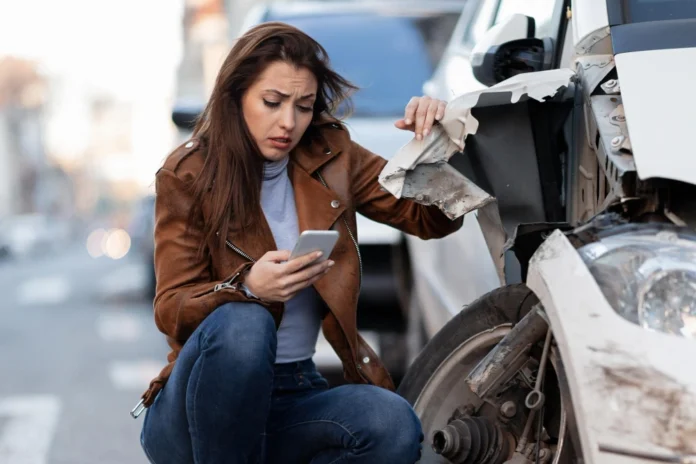Side-impact collisions, commonly referred to as T-bone accidents, are among the most hazardous events on the road. These incidents occur when the side of one vehicle is struck by the front or rear of another, often at intersections.
The consequences can be severe, given the limited protection offered by the sides of most vehicles compared to the front and rear. This blog post aims to shed light on the dangers of side-impact collisions and offers guidance on minimizing risks.
The Anatomy of Side-Impact Collisions
Side-impact collisions typically happen at intersections when one driver fails to yield the right of way, runs a red light, or ignores a stop sign. However, they can also occur in parking lots and when cars are passing on multi-lane roads. The side of a vehicle has relatively little space to absorb impact and protect occupants, making side-impact collisions particularly dangerous.
Why Side-Impact Collisions Are So Dangerous
- Limited Crumple Zones: Unlike the front and rear of a vehicle, which are designed to crumple and absorb the energy of a collision, the sides offer less protection, placing passengers directly in harm’s way.
- Intrusion into Passenger Compartment: The force of a side-impact collision can cause the striking vehicle to intrude significantly into the passenger compartment, increasing the risk of serious injuries or fatalities.
- Less Effective Safety Features: While advancements have been made in side airbag technology, these safety features are often not as effective as front airbags in preventing injuries during a collision.
- High Risk of Severe Injuries: Occupants are at a higher risk of sustaining severe injuries, including head, chest, abdomen, and pelvis injuries, due to the proximity of the impact to passengers.
Strategies for Avoiding Side-Impact Collisions
While it’s impossible to eliminate the risk of being involved in a side-impact collision entirely, there are steps drivers can take to minimize the danger:
- Defensive Driving: Always be aware of your surroundings, especially at intersections. Look both ways before proceeding through an intersection, even if you have the right of way.
- Obey Traffic Signals: Follow traffic signals and signs diligently. A significant number of side-impact collisions result from drivers running red lights or stop signs.
- Use Caution at Intersections: Slow down when approaching intersections and be prepared to stop, even if the light is green. Be especially cautious when visibility is limited.
- Choose Safer Vehicles: When purchasing a vehicle, consider models with high safety ratings for side-impact protection. Look for vehicles equipped with side airbags that provide head and chest protection.
Enhancing Vehicle Safety Features
Automobile manufacturers continue to innovate in the realm of safety, particularly concerning side-impact collisions. Enhanced structural reinforcements, improved side airbag systems, and the introduction of external airbags are among the advancements aimed at mitigating the effects of these crashes. When shopping for a new car, prioritize these safety features to ensure maximum protection for you and your passengers.
Legal Protections in Utah for Side-Impact Collision Victims
The aftermath of a side-impact collision can be overwhelming, with potential physical injuries, and financial, and emotional burdens. In Utah, victims can seek compensation for their damages. Consulting an experienced auto accident lawyer in Utah is crucial for navigating the complex legal landscape after such incidents. These professionals understand Utah’s traffic laws and provide essential guidance on securing compensation for medical bills, lost wages, and pain and suffering. They also negotiate with insurance companies, ensuring victims get fair settlements that reflect their experiences.
The Role of Technology in Preventing Side-Impact Collisions
Emerging technologies play a crucial role in reducing the incidence and severity of side-impact collisions. Systems such as Automatic Emergency Braking (AEB) and Intersection Collision Warning (ICW) can detect potential collisions and either warn the driver or take automatic action to avoid the impact. As these technologies become more widespread, we can expect a significant reduction in side-impact collisions.
Coping with the Aftermath
If you’re involved in a side-impact collision, it’s crucial to seek medical attention immediately, even if you don’t feel injured. Some injuries, particularly internal ones, may not be immediately apparent. Following medical advice, and consulting with legal professionals can help you navigate the complexities of insurance claims and potential legal actions.
Conclusion
Side-impact collisions pose a significant threat to road safety, but understanding the risks and implementing preventive measures can greatly reduce the danger.
By practicing defensive driving, obeying traffic laws, choosing vehicles with advanced safety features, and leveraging technology, drivers can protect themselves and their passengers from the devastating effects of T-bone accidents.
Remember, awareness and preparation are key to ensuring a safer driving experience for everyone on the road.



